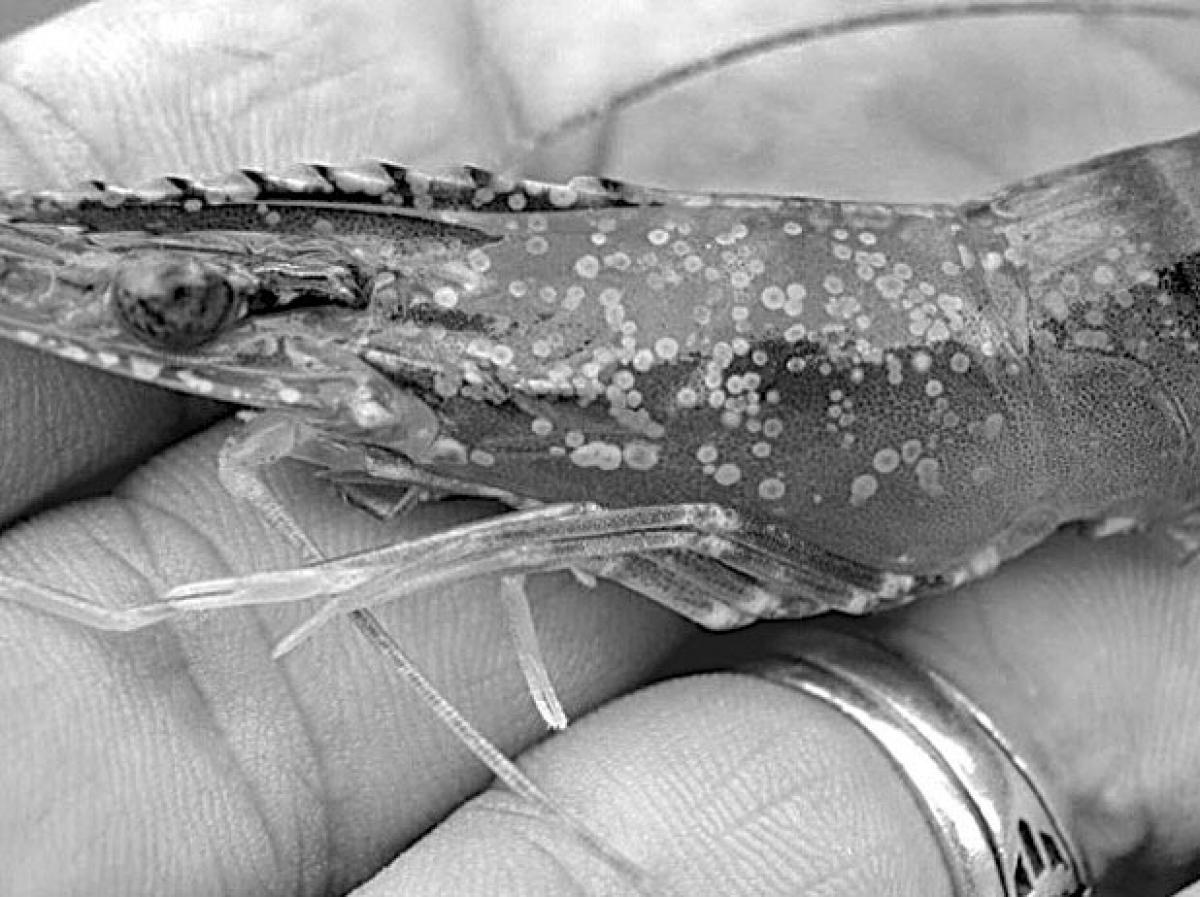Live
- Coronation of Vishvaraj as Mewar’s 77th successor starts amid questions over palace visit
- Give utmost priority to research: SKLTHU V-C
- IT Min launches ‘Transforming 10,000 Minds’ prog
- TTD Board member interacts with locals in Tirumala
- Uttam prods babus to fast-track irrigation projects across State
- Union minister Pradhan launches 'The Teacher App'
- Oppn members seek more time for JPC on Waqf Bill
- SC upholds ‘secular, socialist’ in Preamble
- RASS conducts Siva Parvathi Kalyanam
- Rs 12L refunded to FedEx parcel scam victim
Just In

It has been the classic rags-to-riches story for the shrimp growers in the coastal areas of the Nellore district. Tiger and Vannamei shrimps brought dollars to the doorsteps of aquaculture farmers. However, the halcyon days are over, with the threat of White Spot disease looming sustenance is under question. The disease has been affecting Vannamei shrimp culture.
The disease which wiped out Tiger prawn culture in 1996 is poised to wash out Vannamei shrimps, which contribute towards 70 per cent in national exports
Vijayawada: It has been the classic rags-to-riches story for the shrimp growers in the coastal areas of the Nellore district. Tiger and Vannamei shrimps brought dollars to the doorsteps of aquaculture farmers. However, the halcyon days are over, with the threat of White Spot disease looming sustenance is under question. The disease has been affecting Vannamei shrimp culture. Shrimps began to exhibit white spots on the carapace (neck) and their skin underwent discolouration, after infected with the disease.
The disease unleashed its fury on Tiger Prawn culture in 1996 and has struck again much to the agony of the farmers. It was due to this very disease, the aquaculture farmers ditched Tiger prawns and moved to Vannamei, which after two decades became susceptible to the disease. Aqua farmers, who usually begin shrimp cultivation towards the end of February, are a worried lot. The pernicious disease is capable of wiping out all the Vannamei farms, which are spread across 36,000 hectares, in nine coastal districts of the State.
Lack of pond hygiene, poor quality of the Vannamei seeds and unfavourable climatic conditions are cited as the reasons for the outbreak of the disease. The mortality rate of the affected shrimp is very high and surprisingly, there is no treatment for the affected shrimp so far. K Srinatha Reddy is an aqua farmer in Nellore, who grows shrimp in 80 acres, observed that any climatic variation can adversely affect the health of the shrimp. “The cost of taking up shrimp culture in one hectare is around rupees10-15 lakh.
When the market conditions are extremely favourable, farmers do make as much as 50 percent in profits. On the downside, they can lose entire investment, if the shrimp is affected by disease such as white spot,” he added. Aqua farmers say that the impact of the disease has been felt since last year. “The consequences of the White Spot are catastrophic. Aqua farmers would end up in huge losses and it could also lead to a fall in exports,” said D Radha Krishna Reddy, president of Aqua Farmers State Association.
Vannamei shrimp culture brings in a lot of foreign exchange into the State’s economy, due its tremendous export potential. State has contributed a staggering 70 per cent towards total national exports of Vannamei shrimp last year. However, this year the things are very bleak with the White Spot disease. Speaking about the exports, Archiman Lahiri, Assistant Director of Marine Products Exports Development Authority (MPEDA) said that 2.8 lakh tonnes of Vannamei shrimp was produced last year and bulk of it was exported to foreign countries.
Speaking about the means to avoid the disease, the Deputy Director of MPEDA S Kandan said that the White Spot disease can be avoided with a few precautions. He urged the farmers to avoid winter crops especially during the months of December and January as the disease mainly strikes in winter. He emphasized the importance of maintaining pond hygiene and conducting PCR (polymerase chain reaction) tests on the Vannamei seeds.
He also gave a word of caution to the shrimp farmers on the spread of a fungal disease called EHP (Enterocytozoon Hepatopenaei). “EHP is deadlier than the White Spot disease. It has already affected shrimp in coastal districts. But, if best management practices are employed by the farmers, both EHP and White Spot can be avoided,” he added

© 2024 Hyderabad Media House Limited/The Hans India. All rights reserved. Powered by hocalwire.com







